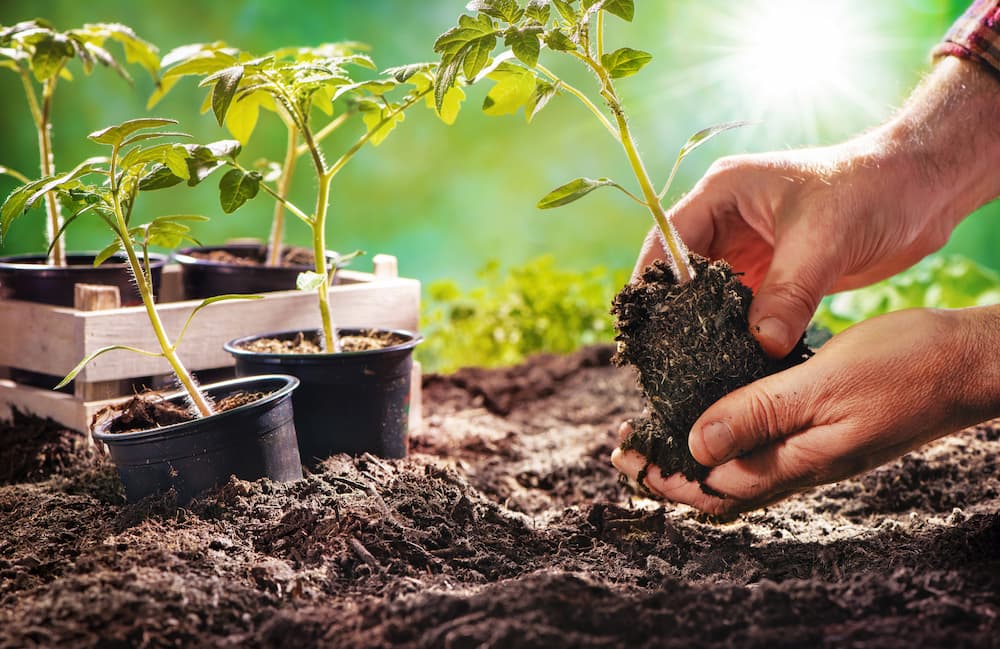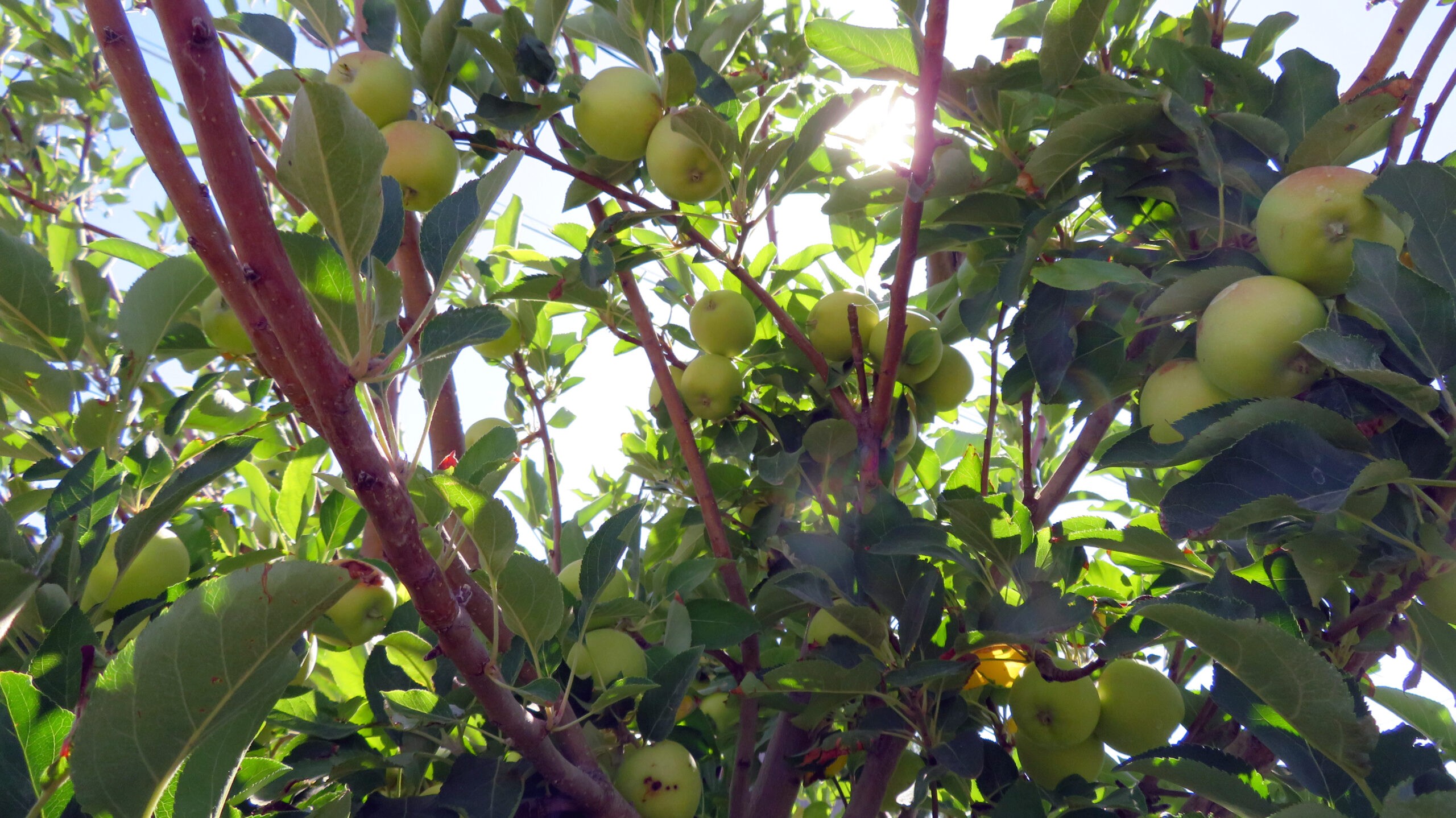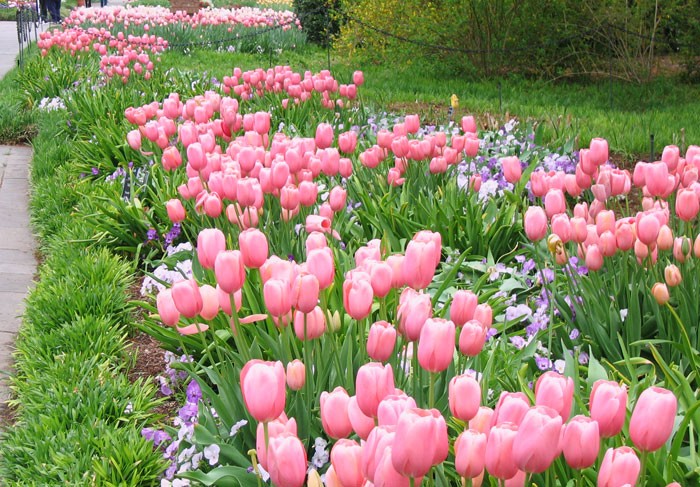A Beginner’s Guide to Growing Tomatoes

What says “summer” more than a perfectly ripe, homegrown tomato from your own backyard garden? We’re lucky that in Texas, we have two growing seasons for tomatoes – planted in early spring for a late spring and summer harvest, and planted in late summer for a mid-fall harvest. You can also start tomatoes by seed in January for a summer crop, and in May for the fall harvests. Growing tomatoes does not have to be difficult, but it can be overwhelming for a beginning gardener. Let’s take a step-by step look at how to grow your own tomato crop.
Step 1: Choose the site.
Tomatoes must have full sun; at least 6 hours or more of direct sunlight daily is best, and they require consistent moisture, so access to a water supply will make growing easier on the gardener. They also require good drainage, air circulation and consistent soil moisture will help prevent disease. Tomatoes can be planted in the ground, but with the heavy clay soils in the Dallas area, the gardens bed will need to have compost and manure incorporated into the soil. It’s often easier to garden in a raised bed (4’ x 4’ x 1’ is a good size), or in a container. Gardeners can used specially formulated, pre-blended soil mixes like the Mayer Raised Bed Mix, and raised beds and containers provide good drainage and make it easier to regulate soil moisture, balance nutrients, and control weeds.
Step 2: Choose your tomato variety.
There are two major types of tomatoes. Determinate tomatoes are bush-type growers and generally produce larger fruits that ripen all at once. Their more compact growth habit is good for container culture, and they do not require pruning. Indeterminate tomatoes usually have smaller-sized fruit that is produced over a much longer time on larger, vining-type plants. Indeterminate tomatoes require stakes or wire cages to support them. Pruning indeterminate tomatoes so that they have no more than four stems will channel the plant’s energy to making more fruit.
You can also choose between hybrid and heirloom varieties. Hybrid tomatoes are bred for specific size, flavor, or other characteristics such as disease resistance. Heirloom tomatoes are varieties that have been grown for 50 years or more. These may produce less fruit, but they have unusual shapes, colors, and distinctive flavor qualities that tomatoes lovers look for year after year.
Step 3: Plant.
When you’re ready to plant, begin by soaking the plant – usually a seedling (transplant) in a 4” pot – in a solution of liquid seaweed or root stimulator. Then dig the planting hole and sprinkle a balanced tomato fertilizer such as Espoma’s TomatoTone in the bottom. (Alternatively, you can sprinkle fertilizer around the plant in a ring after planting). Next, prune a few lower leaves off the plant and plant it deep, so that the bottom of the stem is under the soil. Additional roots will grow from the stem. Finally, water the plant thoroughly, watering around the base and keeping water off the leaves; finish by applying 2-3 inches of a shredded bark or pine needle mulch after planting to conserve soil moisture.
Step 4: Nurture your growing crop.
Cage indeterminate tomatoes right after planting to provide support as they get taller and fruit matures. Make sure any support you select is tall enough for the full size of that variety.
Water in the morning and keep tools clean to avoid pests and fungal diseases. Drip irrigation works well to keep water off the leaves. In the heat of summer, you may need to water twice a day, especially for tomatoes grown in containers.
Fertilize after the first fruits have started to develop and reapply every two weeks thereafter.
Monitor your plants daily for any appearance of pests or diseases and always use organic sprays or soapy water. Some gardeners believe that “companion planting” – planting certain herbs or flowers in an edible garden – can control pests, but this technique can only work when the companion plants are heavily planted in a mass.
Step 5: Enjoy your harvest!
Gently twist to remove ripe tomatoes and store upside-down unrefrigerated until needed. Green tomatoes can be harvested as well and allowed to ripen indoors on a warm windowsill.
Image Source: AlexRaths / Getty Images



